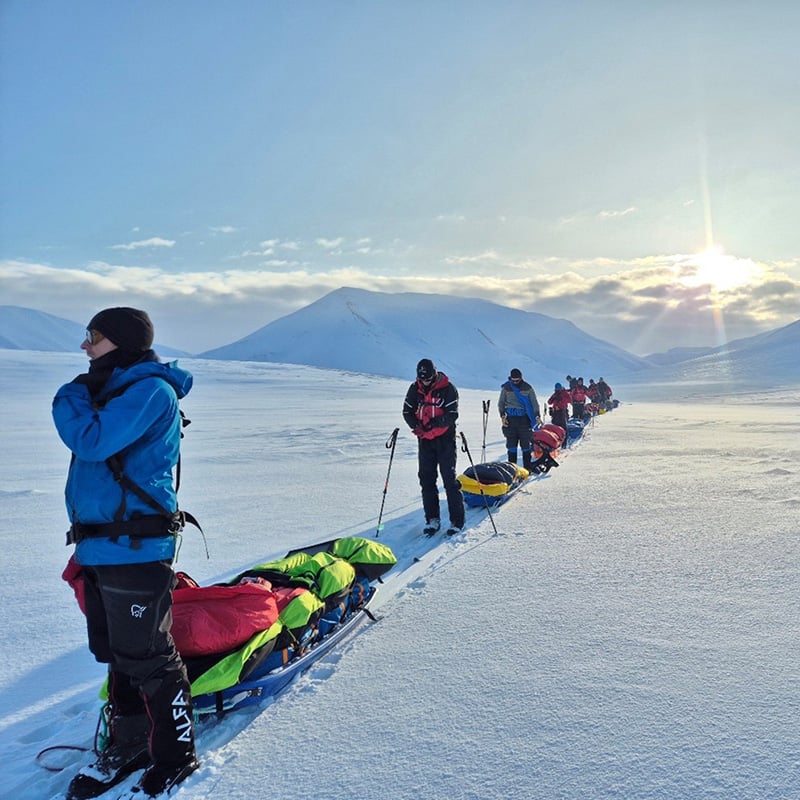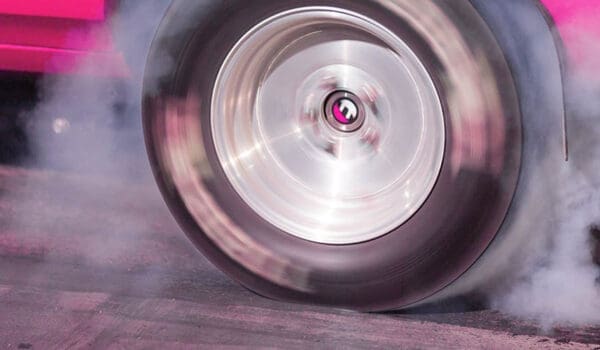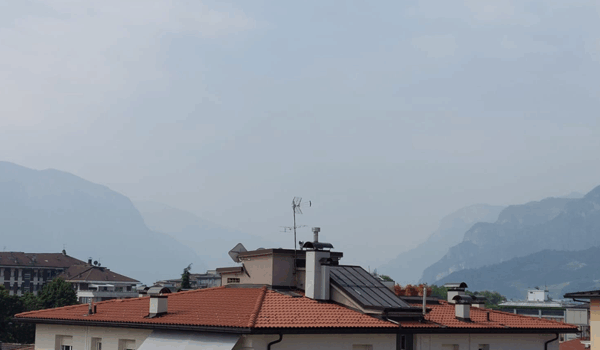LONDON, LEIPZIG and TRONDHEIM: Extreme tourists crossing some of the toughest polar landscapes on Earth help accelerating the mapping of microplastic pollution in the atmosphere.
The Global Atmospheric Plastics Survey (GAPS) has partnered with Norwegian polar adventure provider Ousland Explorers to enable Ousland’s clients to collect samples of virgin snow from remote glaciers during their expeditions. The partnership will allow GAPS to collect samples of glacial snow from around the world faster than anticipated, whilst offering Ousland’s clients the chance to become ‘citizen scientists’ and take part in the first mapping of micro- and nanoplastic pollution.
Will create a global ‘snapshot’ of atmospheric microplastics
Led by professional scientists and an experienced team of amateur mountaineers, GAPS is sampling surface snow from high-altitude glaciers. The snow captures particles of whatever is in the air around them, acting as a natural repository for atmospheric pollutants such as micro- and nanoplastics. GAPS is using a newly developed technique that makes a scalable ‘citizen scientist’ approach possible. Previously, measuring atmospheric microplastics required either getting professional scientists into remote regions or the use of expensive equipment, severely limiting the number of locations that could be sampled.
GAPS’ expeditions will create the first global map of atmospheric micro- and nanoplastic pollution. The survey will tell us exactly what kinds of micro- and nanoplastics have dispersed in our atmosphere; which specific polymers are the most prevalent and their concentrations; how big the particles are, how far they have been carried on air currents and where they have come from.
To achieve this ‘global snapshot’, GAPS estimates that 50 expeditions will be needed. Since its inception in summer 2024, 14 expeditions have successfully recovered samples from Antarctica, the Himalaya, the steppes of Central Asia and the High Arctic of Greenland and Svalbard as well as alpine regions across Europe. A further five expeditions are currently in the field and a dozen or more planned.

Goal: Quantifying emissions
Dr. Nikolaos Evangeliou at the climate and environmental research institute NILU in Norway is a specialist in atmospheric dispersion modelling. His previous work has included the study of particulates from forest fires and radionuclides from the Chernobyl disaster. During recent years, he has also been looking into how micro- and nanoplastic particles travel through the atmosphere. He and others described this in a scientific paper published in the journal Nature Communications back in 2020.
“I got involved with GAPS to understand how micro- and nanoplastics reach remote places of the earth. Our future goal is to use such measurements with our modelling tools to try to quantify global micro- and nanoplastic emissions and identify their hotspot regions,” he says.
Right now, Børge Ousland is carrying with him plastic-free sample kits provided by UFZ in Germany. He will use them to collect snow samples, which will then be sent to UFZ for analysis.
“After the analysis, we will know more about the polymer content in these samples. This will allow us here at NILU to further run our models to identify their potential source origin and even quantify their exact fluxes,” Evangeliou explains.
Evangeliou’s work will be carried out in the frame of the GAPS project, and funded by the Norwegian Research Council’s FRIPRO project MAGIC (Airborne Microplastic Detection, Origin, Transport and Global Radiative Impact).
Collaboration, not competition
GAPS expedition leader Dr Al Gill had the original idea for GAPS during Covid lockdown. In collaboration with scientific lead Dr Materić at the Helmholtz Centre, he came up with this new approach to measuring atmospheric microplastic: Using ‘citizen scientists’ with specialist skills to sample on a scale which could not be achieved using just professional scientists.
Dr Gill says: “In the 20th century, explorers like Amundsen and Scott raced to be first to the world’s most remote regions. In the 21st century, these have all been visited. The new ‘undiscovered country’ is science, and this is best done collaboratively rather than competitively”.
Bridging gaps
Sindre Rødsten Sivertsen, General Manager of Ousland Explorers says: “It is a fantastic opportunity for us to implement some science on our expeditions, which bridges the gap to our historical origin. We are very grateful for the work done by Al Gill and the GAPS team.”
From the The first Ousland expedition collecting for GAPS was on Svalbard in April 2025. Borge Ousland himself is now leading a traverse of Ellesmere Island as part of his Ice Legacy project. This will be the most remote sampling for GAPS so far.




